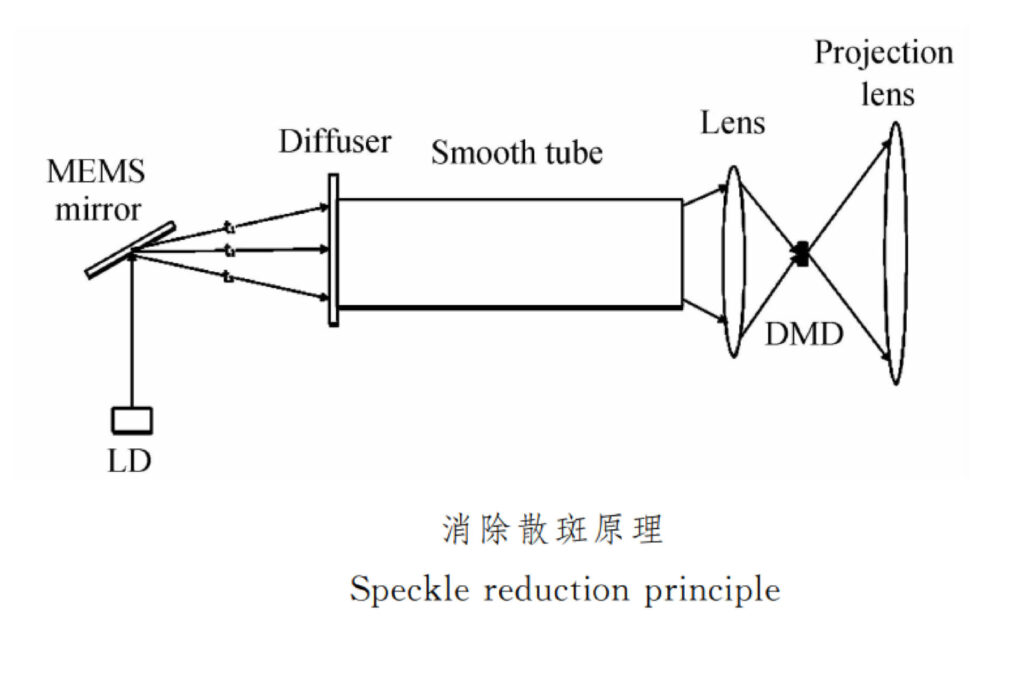Multiphoton microscopy (MPM) is an advanced optical imaging technique widely used in biomedical research and clinical applications. Compared to traditional single-photon microscopy, multiphoton microscopy utilizes the simultaneous absorption of multiple low-energy photons to excite a sample, allowing for high-resolution imaging at greater tissue depths. The galvanometer mirror plays a critical role in multiphoton microscopy, not only enabling precise laser scanning but also supporting high-efficiency and high-resolution imaging.
Basic Principle of Multiphoton Microscopy
Multiphoton microscopy is based on nonlinear optical principles, where a high-frequency laser (typically near-infrared) is used to excite fluorescence. Unlike single-photon excitation, which requires a single high-energy photon to excite an electron, multiphoton excitation occurs when two or more low-energy photons simultaneously interact with an electron, causing it to jump to a higher energy state and emit fluorescence. This nonlinear process restricts the excitation to a very small focal region, reducing photodamage to surrounding tissues and allowing for deeper penetration into biological samples, generating high-resolution three-dimensional images.
The Role of Galvanometer Mirrors in Multiphoton Microscopy
In multiphoton microscopy, galvanometer mirrors are used to rapidly and precisely control the direction of the laser beam. They ensure that the laser can scan across the sample with accuracy. The following are the specific functions of galvanometer mirrors in multiphoton microscopy.
(1) Precise Control of Laser Scanning
The galvanometer mirror is an adjustable mirror driven by electrical currents, capable of altering the laser beam’s direction rapidly. In multiphoton microscopy, it is used to control the laser beam’s scanning path across the sample surface. By moving the mirror at high speed, the laser beam can scan along a predefined path to excite the sample point by point, producing high-resolution images. The galvanometer mirror significantly enhances scanning speed while ensuring accuracy, preventing image distortion or errors.
(2) High-Speed Scanning and Real-Time Imaging
Multiphoton microscopy often requires high-speed scanning to capture dynamic biological processes. The galvanometer mirror’s fast response allows for micro-adjustments of the laser beam position in milliseconds, enabling real-time imaging of live biological samples, such as cell migration, blood flow, or neural activity. This high speed and precision are key to the real-time imaging and deep tissue imaging capabilities of multiphoton microscopy.
(3) Enabling Three-Dimensional Imaging
One of the major advantages of multiphoton microscopy is its ability to produce three-dimensional images. Galvanometer mirrors control the laser beam during precise depth scans of the sample, collecting image data from different tissue layers. Due to the nonlinear excitation nature of the technique, the laser can penetrate deeper into tissue compared to traditional microscopy. The mirror’s precise control allows for the acquisition of data from deeper layers, which is essential for generating three-dimensional images. This is particularly useful in studying organ structure, tumor growth, neural connectivity, and other biological phenomena.
(4) Optimizing Laser Spot and Enhancing Resolution
The size and position of the laser spot directly impact the resolution of the multiphoton microscope. The galvanometer mirror allows for precise adjustment of the spot’s position and shape, ensuring the laser is always focused on the sample’s focal point during scanning. By carefully controlling the laser beam’s focus, the galvanometer mirror improves spatial resolution and minimizes the common problem of focal offset in traditional scanning systems.
(5) Reducing Photodamage and Enhancing Imaging Depth
Multiphoton microscopy uses low-energy near-infrared lasers, which generally result in less photodamage and greater tissue penetration. The galvanometer mirror’s precise control allows the laser energy to be concentrated only on the scanning region, minimizing unnecessary exposure to non-scanned areas and reducing photodamage. Additionally, the mirror ensures that the scanning area and speed are controlled effectively, improving the quality of imaging in deeper tissue layers.
Challenges and Innovations in Galvanometer Technology
While galvanometer mirrors are widely used in multiphoton microscopy, there are still challenges in the technology. As imaging demands continue to increase, the precision, scanning speed, and stability of the mirrors need to be continually improved. Emerging technologies such as MEMS (Microelectromechanical Systems) mirrors and high-speed mirror systems are addressing these challenges. MEMS mirrors, known for their compact design and fast response times, are becoming a promising scanning technology for multiphoton microscopy. Additionally, advancements in algorithms and image processing techniques are enhancing the efficiency of galvanometer-controlled scanning for real-time dynamic imaging.
Future Prospects
As biomedical research advances, the potential applications of multiphoton microscopy are expanding. With the precision provided by galvanometer mirrors, multiphoton microscopy can offer breakthroughs in real-time dynamic imaging, cellular-level observation, and deep tissue imaging. It holds great promise in fields like neuroscience, cancer research, developmental biology, and more, providing richer data for disease diagnosis, treatment planning, and drug development. As galvanometer mirror technology and multiphoton imaging systems continue to evolve, we will see more efficient, precise, and deep biomedical imaging, unlocking new possibilities in scientific research and clinical applications.
Conclusion
The galvanometer mirror is indispensable in multiphoton microscopy, providing the precise control required for laser scanning and enabling high-resolution imaging at greater depths. As mirror technology continues to innovate, multiphoton microscopy will continue to advance, playing a pivotal role in biomedical research and clinical diagnostics.

